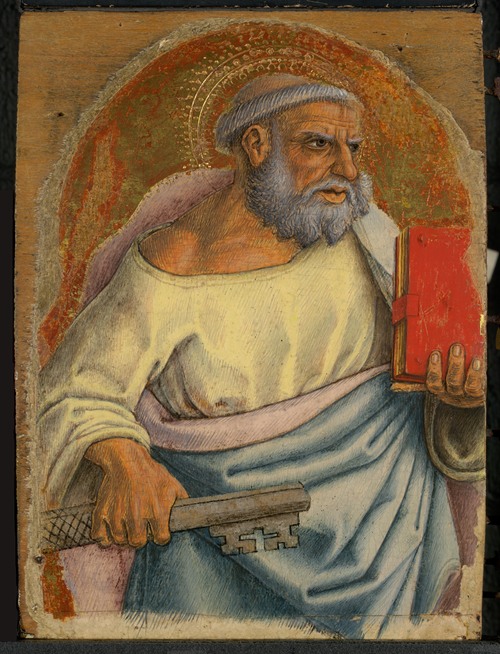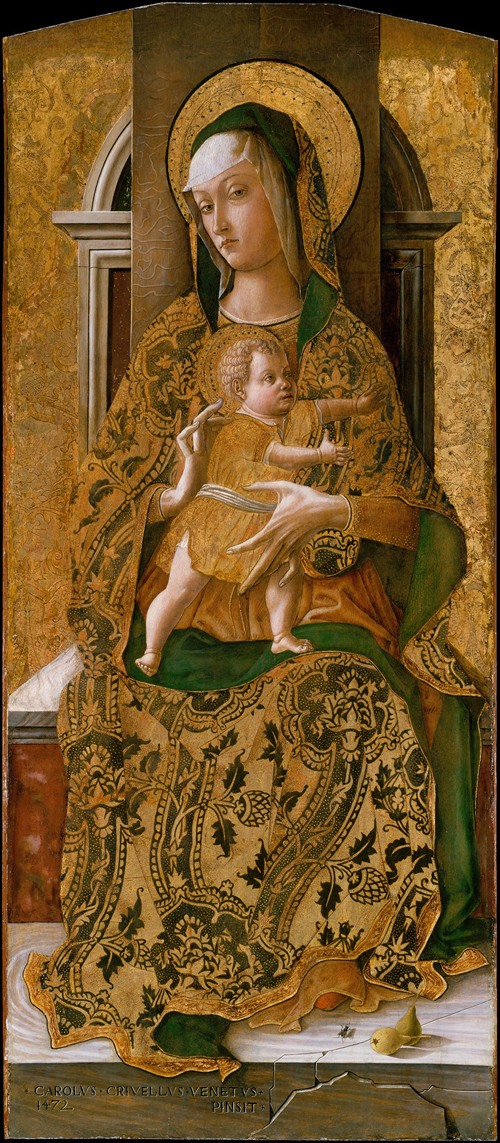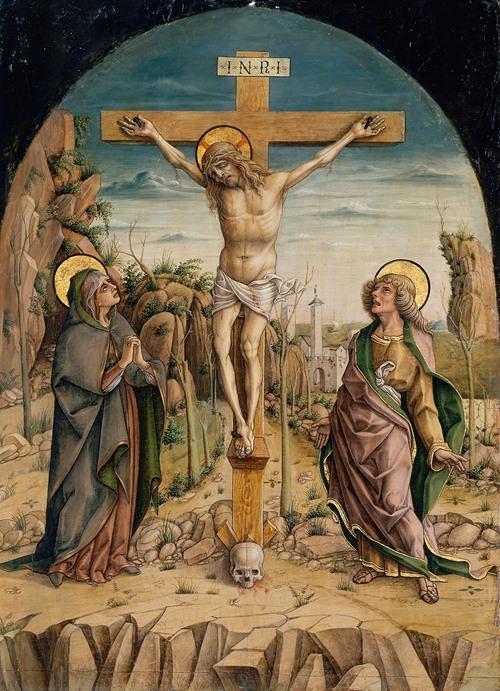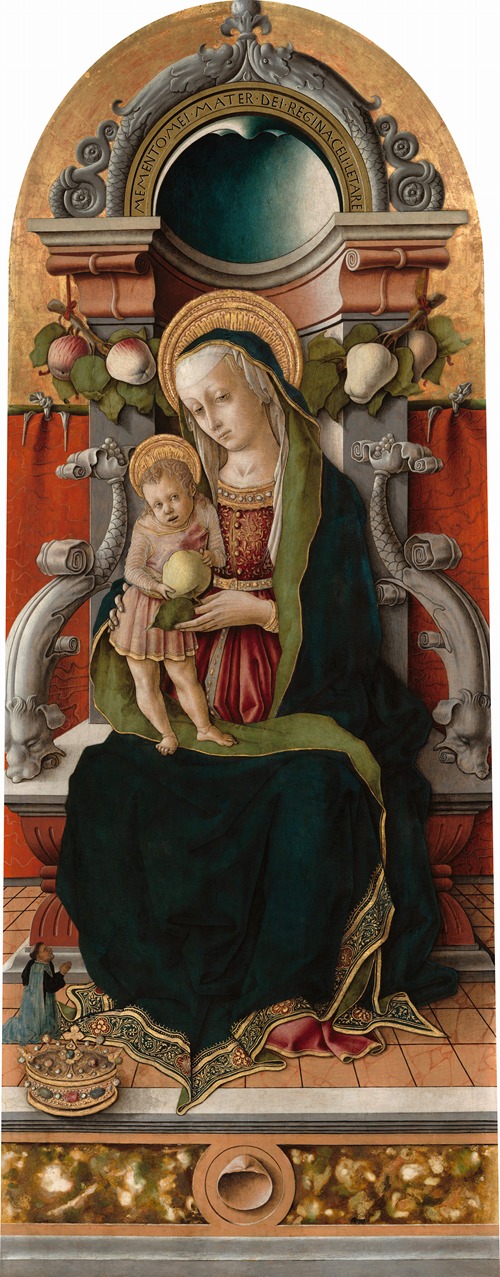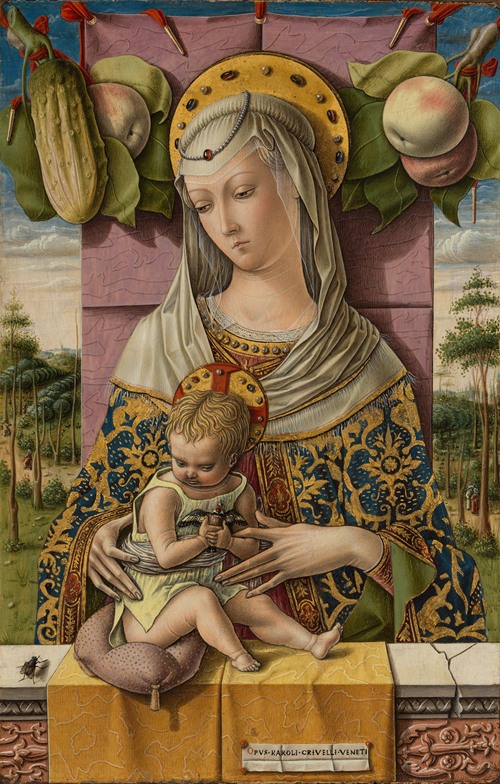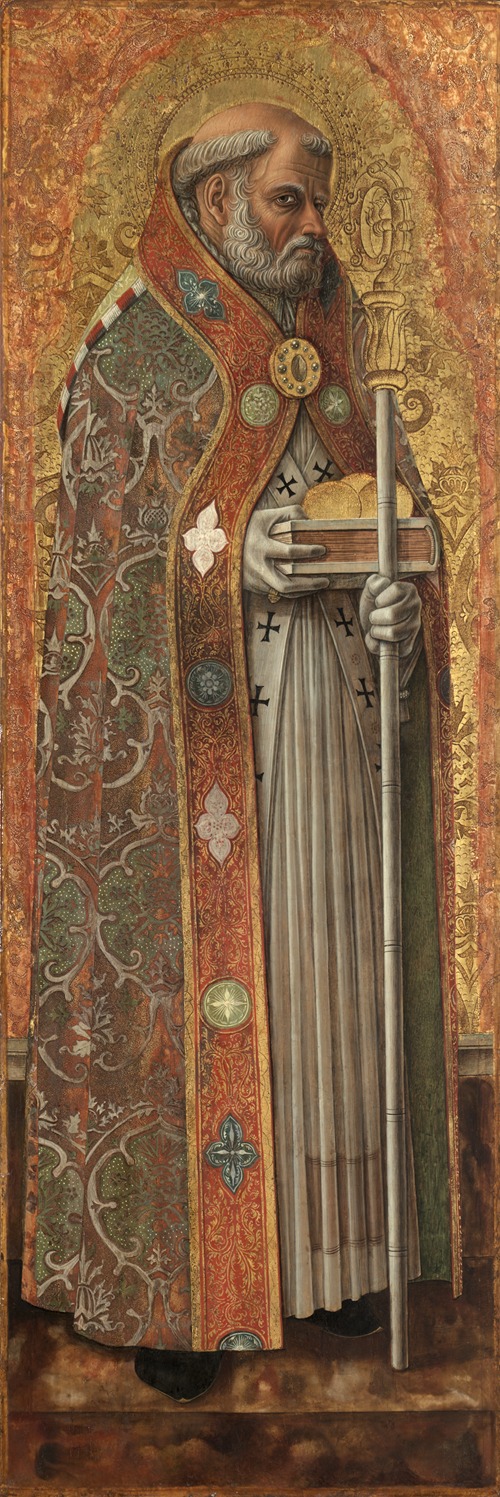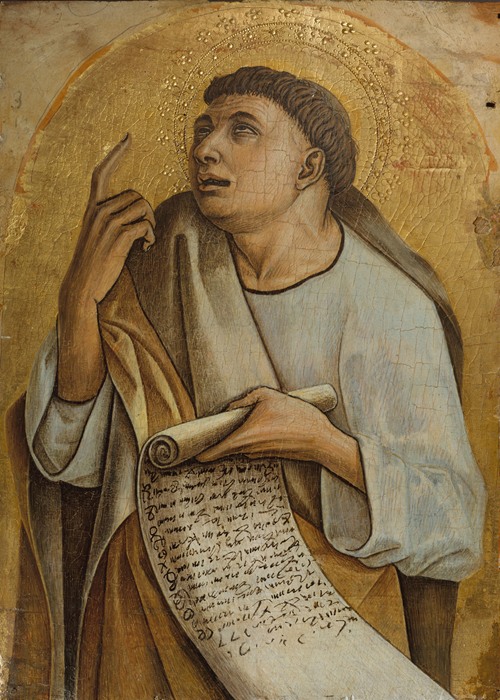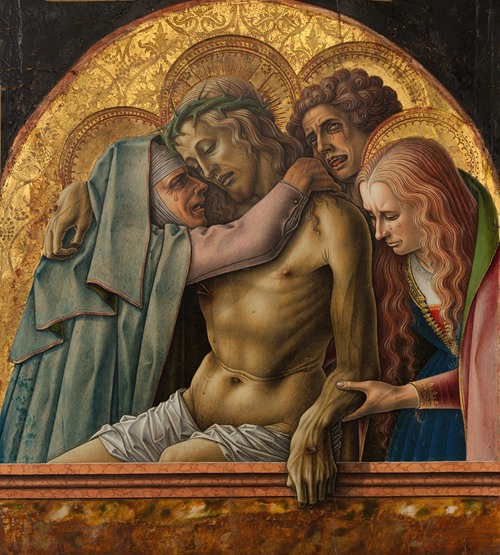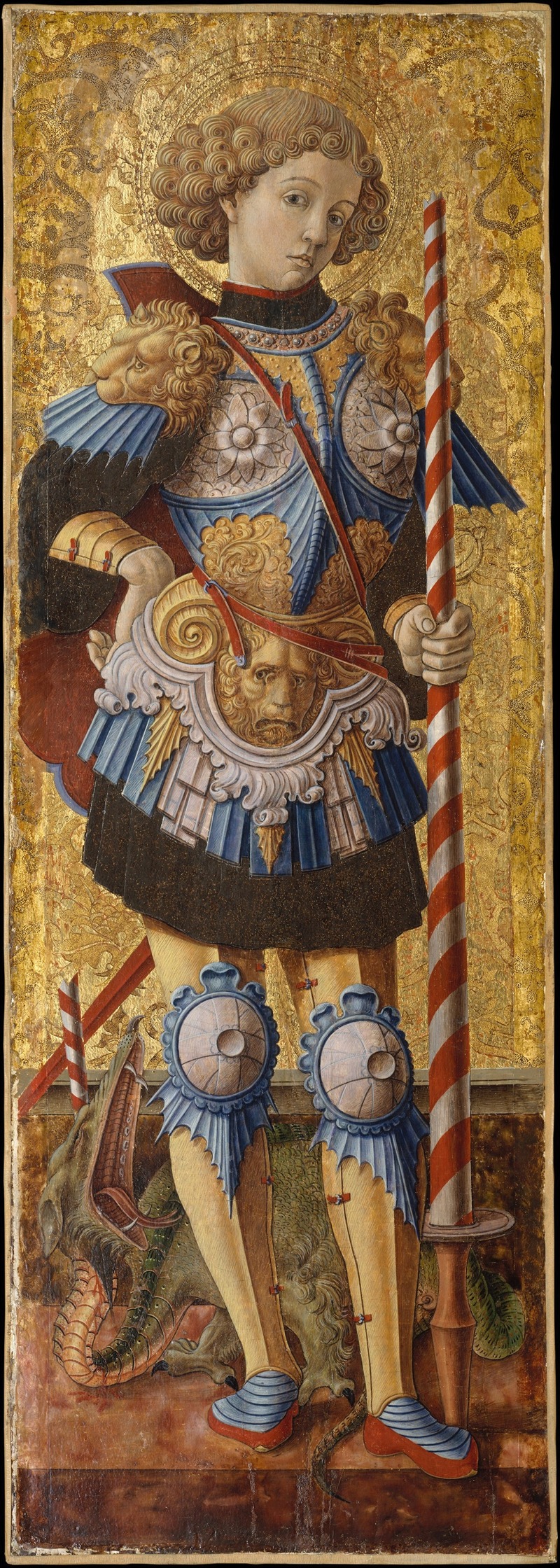
Carlo Crivelli was an Italian Renaissance painter of conservative Late Gothic decorative sensibility, who spent his early years in the Veneto, where he absorbed influences from the Vivarini, Squarcione and Mantegna. He left the Veneto by 1458 and spent most of the remainder of his career in the March of Ancona, where he developed a distinctive personal style that contrasts with that of his Venetian contemporary Giovanni Bellini.
Crivelli was born around 1430–35 in Venice to a family of painters and received his artistic formation there and in Padua. The details of Crivelli's career are still sparse: He is said to have studied under Jacobello del Fiore, who was painting as late as 1436; at that time Crivelli was probably only a boy. He also studied at the school of Vivarini in Venice, then left Venice for Padua, where he is believed to have worked in the workshop of Francesco Squarcione and then, after being sentenced in 1457 to a six-month prison term for an affair with a married woman, left in 1459 for Zadar in Dalmatia (now part of Croatia, but then a Venetian territory).
He was master of his own shop when sent to prison for adultery in 1457. The dates he signed on the pictures that survive extend from 1468 on an altarpiece in the church of San Silvestro at Massa Fermana near Fermo to 1493 on The Dead Christ between St John, the Virgin and Mary Magdalene in Milan's Brera Gallery.
Though the artist advertised his Venetian origins with his signature, often some variation on Carolus Crivellus Venetos ("Carlo Crivelli of Venice"), Crivelli seems to have worked chiefly in the March of Ancona, and especially in and near Ascoli Piceno. Only two pictures can be found today in Venice, both in the church of San Sebastiano.
He painted in tempera only, despite the increasing popularity of oil painting during his lifetime, and on panels, though some of his paintings have been transferred to canvas. His predilection for decoratively punched gilded backgrounds is one of the marks of this conservative taste, in part imposed by his patrons. Of his early polyptychs, only one, the altarpiece from Ascoli Piceno, dated 1473, survives in its entirety in its original frame, and still in its original location (the city's Cathedral). All the others have been disassembled and their panels and predella scenes are divided among several museums.
An amorphous band of contemporaries, imitators and followers, termed Crivelleschi, reflect to varying degrees aspects of his style.

